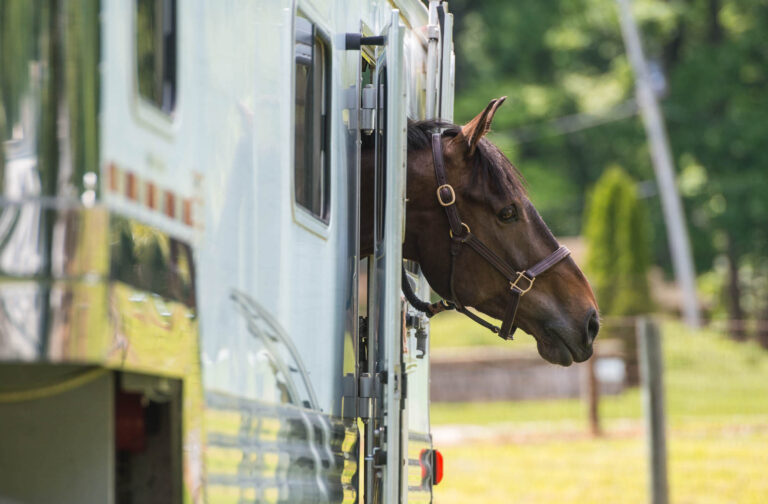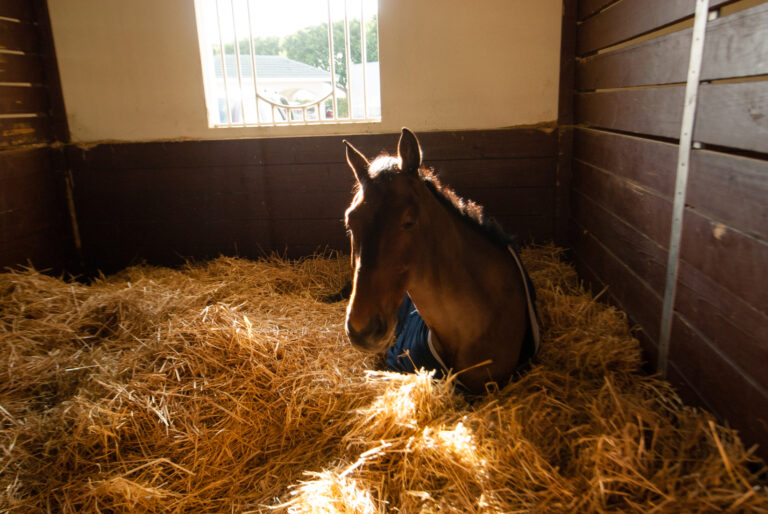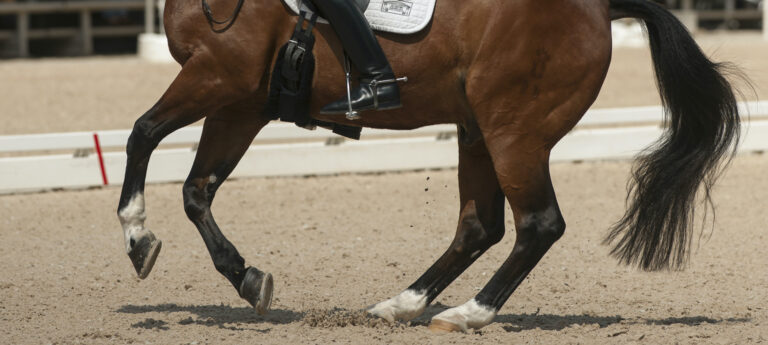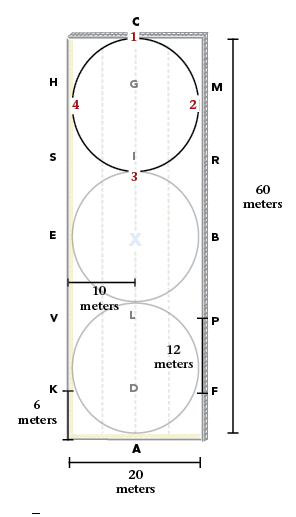Q: My horse recently injured his suspensory ligament and my vet has recommended shockwave therapy. How will that help him heal? I have also heard of laser therapy for tendon and ligament injuries. Is that something I should do also or instead?
—Name withheld by request
A: Extracorporeal shockwave therapy (ESWT) is a noninvasive therapy commonly used to treat equine soft-tissue injuries. In this therapy, a high-energy soundwave is generated outside the body (extracorporeal) and pulsed into the target tissue to stimulate the growth of new blood vessels and trigger a series of cellular effects that result in tissue healing. Some of the specifics of how it helps the healing process have yet to be worked out, but there are some well-recognized results such as reduced swelling and improved collagen organization, a necessary step for the healing of a ligament, which is largely made of collagen fibers. In chronic injuries when the healing process has stagnated, shockwaves can help restart the healing response by stimulating the body’s local inflammatory response. ESWT is particularly effective at healing enthesopathies, ligament injuries at their attachment to bone.
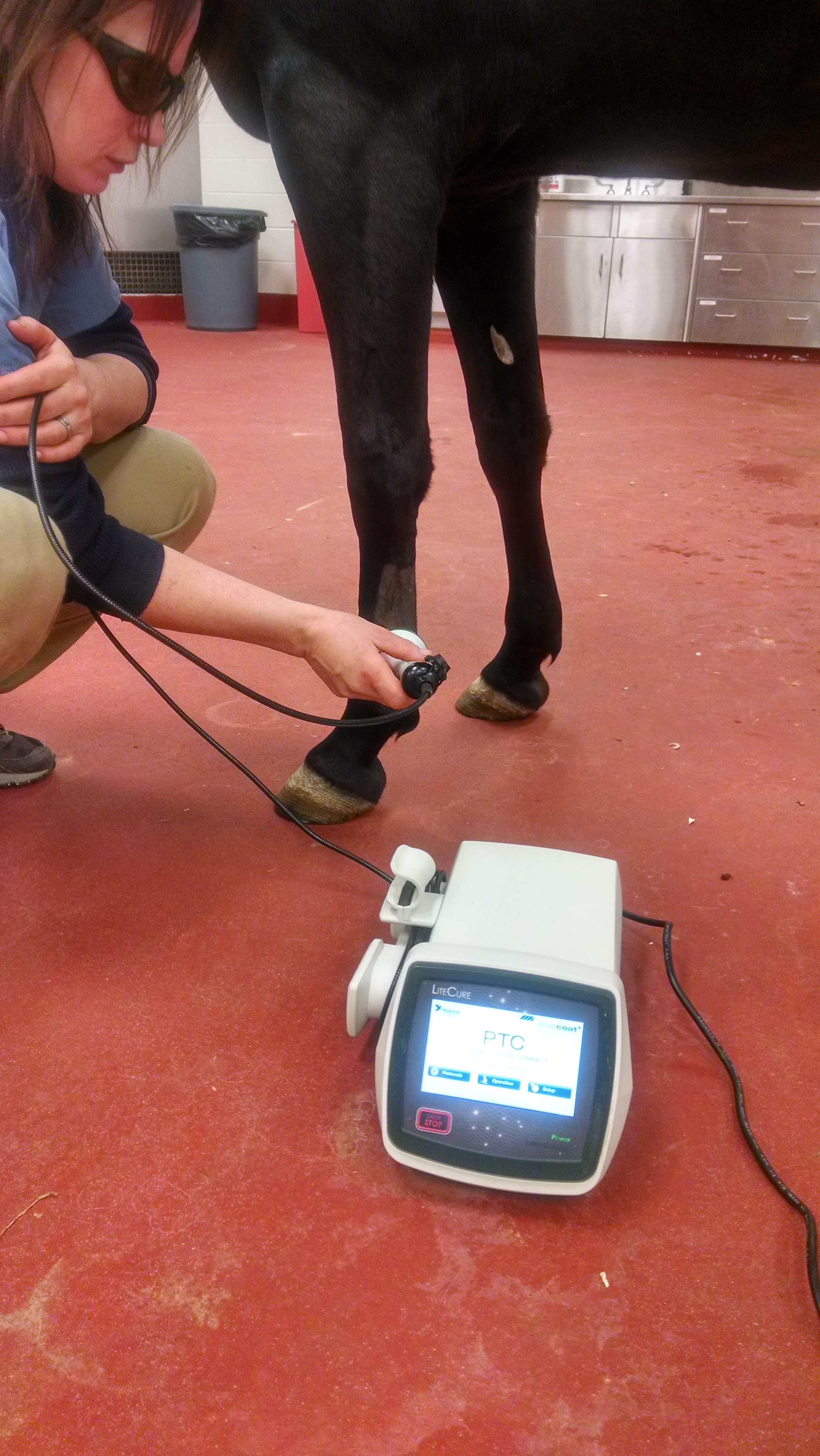
)
Shockwave therapy is often part of a treatment plan that also includes anti-inflammatories, controlled exercise, topical therapies, such as icing and liniments, and potentially additional regenerative therapies like stem cells or platelet-rich plasma. A recent study showed that application of shockwave therapy following platelet-rich plasma (PRP) injection helped to activate the growth factors within the PRP to improve tissue response.
Shockwave therapy is also recognized as an effective management tool for bone pain. It is used commonly to manage degenerative joint disease such as lower hock arthritis, and to address causes of back pain such as spinous process impingement (kissing spine disease). Other applications include stress fractures and bone bruises, and its effects on vascular supply have spurred research into therapeutic benefits for wound healing. Since its pain-relieving effects can last up to 48 hours, there have been concerns for pain-masking when performed too close to competition. As of the 2015 competition year, the U.S. Equestrian Federation issued a three-day withdrawal time on shockwave therapy, except on the back and pelvis which carries a 12-hour withdrawal time. Shockwave therapy also has a withdrawal time of five days for FEI competition.
Shockwave therapy is generally well tolerated by equine patients, has minimal side effects and can be performed in a barn environment. Using a shockwave machine on a horse is considered by most states to be the practice of veterinary medicine, which means it is done by or on the order of a veterinarian. The treatment itself can be painful and most horses require some light sedation to allow the practitioner to perform the treatment safely and make it a more comfortable experience for the horse. Technological advances continue to refine the equipment itself, making it lighter weight and more portable, and the overall cost has come down, so it is more affordable for a veterinarian to purchase a machine. The machines allow practitioners to adjust the energy settings, number of pulses and number of overall treatments. These settings control how intense the treatment is, and veterinarians have to use their judgment to pick a stimulus that is strong enough to affect a healing response, but not so overwhelming that it causes damage to otherwise healthy tissue. Most practitioners have an algorithm that they follow based on therapeutic responses seen in their own selection of cases or protocols published in journals or shared at continuing education seminars. A typical protocol for a soft tissue injury involves one to three treatments at two to four week intervals.
In recent decades, regenerative medicine has changed the landscape for treating and managing musculoskeletal conditions in horses. One of the most important regenerative therapies of late is laser therapy. The word “laser” originated as an acronym for “Light Amplification by Stimulated Emission Rays” and works by concentrating and focusing light at a specific wavelength that can then be directed toward muscles, tendons, bones and skin. Laser therapy is also noninvasive, well tolerated by equine patients and is not painful so sedation is not required. The application of this therapy can also be used to prevent and/or treat conditions like arthritis, back pain, tendon or ligament strains and wounds.
There are four classes of laser therapy—Class I through IV—and the designations are based on the wavelength of the light emitted from the machine, as well as how much energy is delivered to the tissue and over what length of time. As the power of the laser increases, so does its healing ability (as well as the risk of injury to the eyes and skin). Because of this, Class IV laser therapy is only offered through a licensed veterinarian and requires certain precautions to protect eyes and skin from burns. Class IV lasers are also prohibited from use in FEI competition. The lower classes of lasers are referred to as “cold lasers” because their lower energy output doesn’t cause the same thermal effects as the high-powered lasers in the Class IV category. Although they are still hugely beneficial tools for those who use them, they don’t pack the same therapeutic punch as Class IV lasers.
Like shockwave therapy, significant biological processes are impacted within the targeted tissue through laser therapy. Anti-inflammatory, pain modulation and tissue repair are achieved through a multitude of processes, including increased blood flow and lymphatic drainage, and activation of cellular processes that stimulate healing. The cumulative result is revitalized, healthier tissue.
Shockwave and laser therapy have similar applications and exert similar properties on their target tissues to ultimately decrease inflammation and pain and facilitate the healing process. They are separate and yet compatible and complementary therapies. In many cases, both are recommended for optimal healing of a sports injury.
While both therapies have value in healing known injuries, one of the most important considerations for regenerative therapies is their utility in preventing repetitive stress injuries. Proactive treatment prior to strenuous athletic events for known problem areas, as well as initiating prompt treatment once an injury is suspected or diagnosed, can change the course of healing and lead to a better overall recovery. As always, your veterinarian will help guide you toward the best and most appropriate treatment and management routine for your horse’s individual needs.
This column has not been approved or endorsed by U.S. Equestrian.
Christina “Cricket” Russillo, DVM, graduated from the Tufts University School of Veterinary Medicine in 2001. After completing a large animal medicine and surgery internship at Texas A&M, she realized her desire was to work on elite sporthorses. Following 13 years of practice at Fairfield Equine Associates in Newtown, Connecticut, focused on high-level show-jumping and dressage horses, she joined Virginia Equine Imaging in 2015. Russillo relocates to Florida every winter to support her clients and patients. She has competed through Third Level in dressage, and in February 2017 she was appointed the U.S. Dressage Team veterinarian.


